This tiny bird is a big deal. Known (for now) simply as 2302, this ball of wet fluff is the first critically endangered baby California Condor born at the San Diego Zoo Safari Park this year, and this—right here—is the first public announcement of its arrival.
Say hi. Maybe even sing happy birthday.
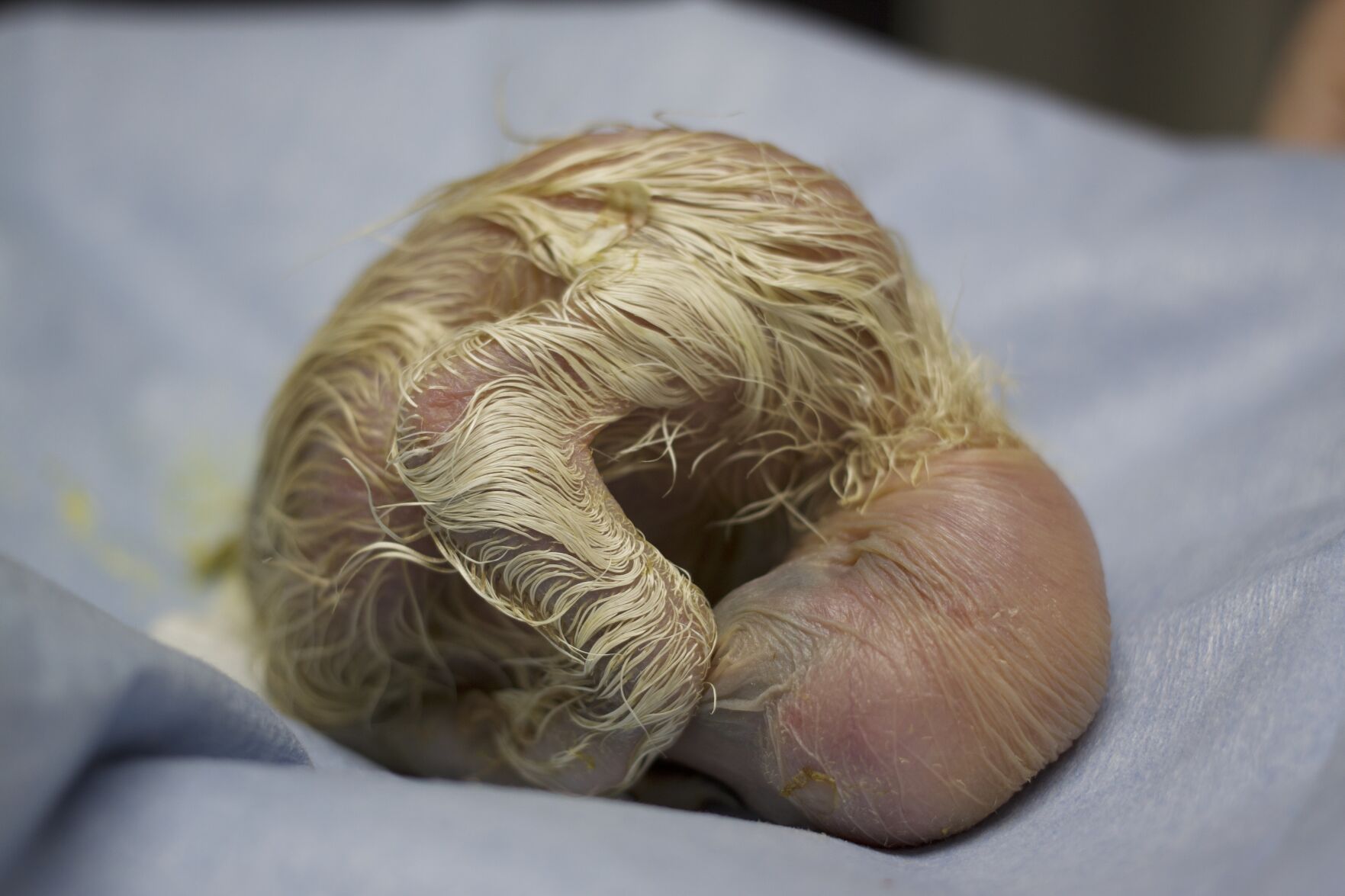
Condor 1 .jpeg
Photo Credit: Mateo Hoke
There once were fewer than two dozen California Condors on the planet, so every new birth is a momentous occasion.
But 2302’s arrival is also a supersized deal because California Condors—when full grown—are the largest flying birds in North America (and perhaps the most unique-looking), with wingspans upwards of 10 feet. Someday 2302 could be released into the wild. But 2302 has to grow first. A lot.
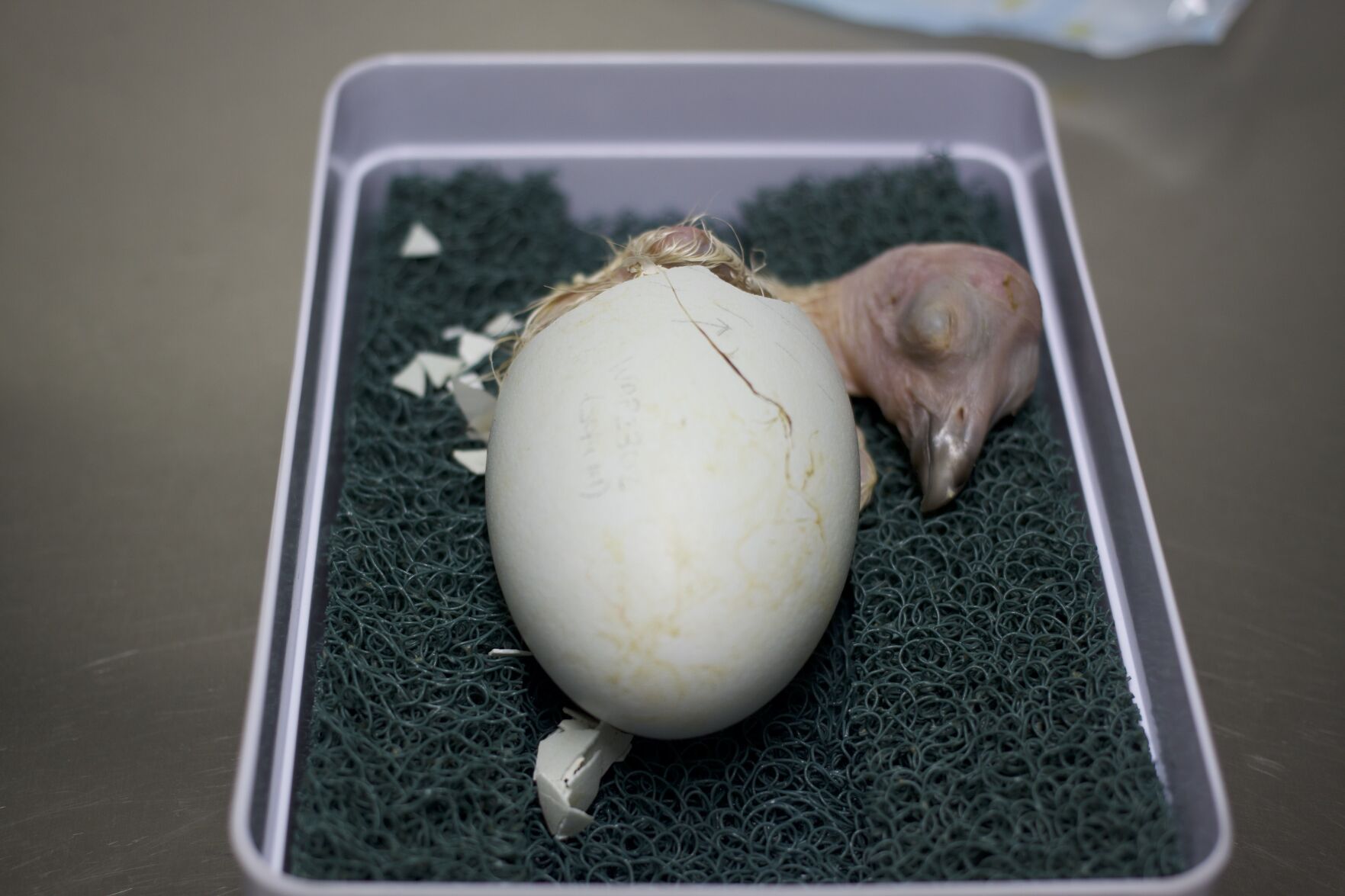
Condor 2.jpeg
Photo Credit: Mateo Hoke
The egg was carefully monitored by a round-the-clock team of experts: weighed, measured, rotated, and incubated for 57 days to give it the best possible chance at life. 2302 is now thriving, feasting on mice and flavorless Pedialyte.
2302’s sex isn’t yet known. The sex of a baby condor can’t be visually determined, so we’ll have to wait for the results of a blood sample.
Sacred to many indigenous cultures that share their territory, these majestic birds—whose flight takes them just below heaven at altitudes of 15,000 feet—have played a pivotal role in the lives and ceremonies of peoples throughout California. While still critically endangered, their numbers are rising despite the myriad challenges they face in the wild.
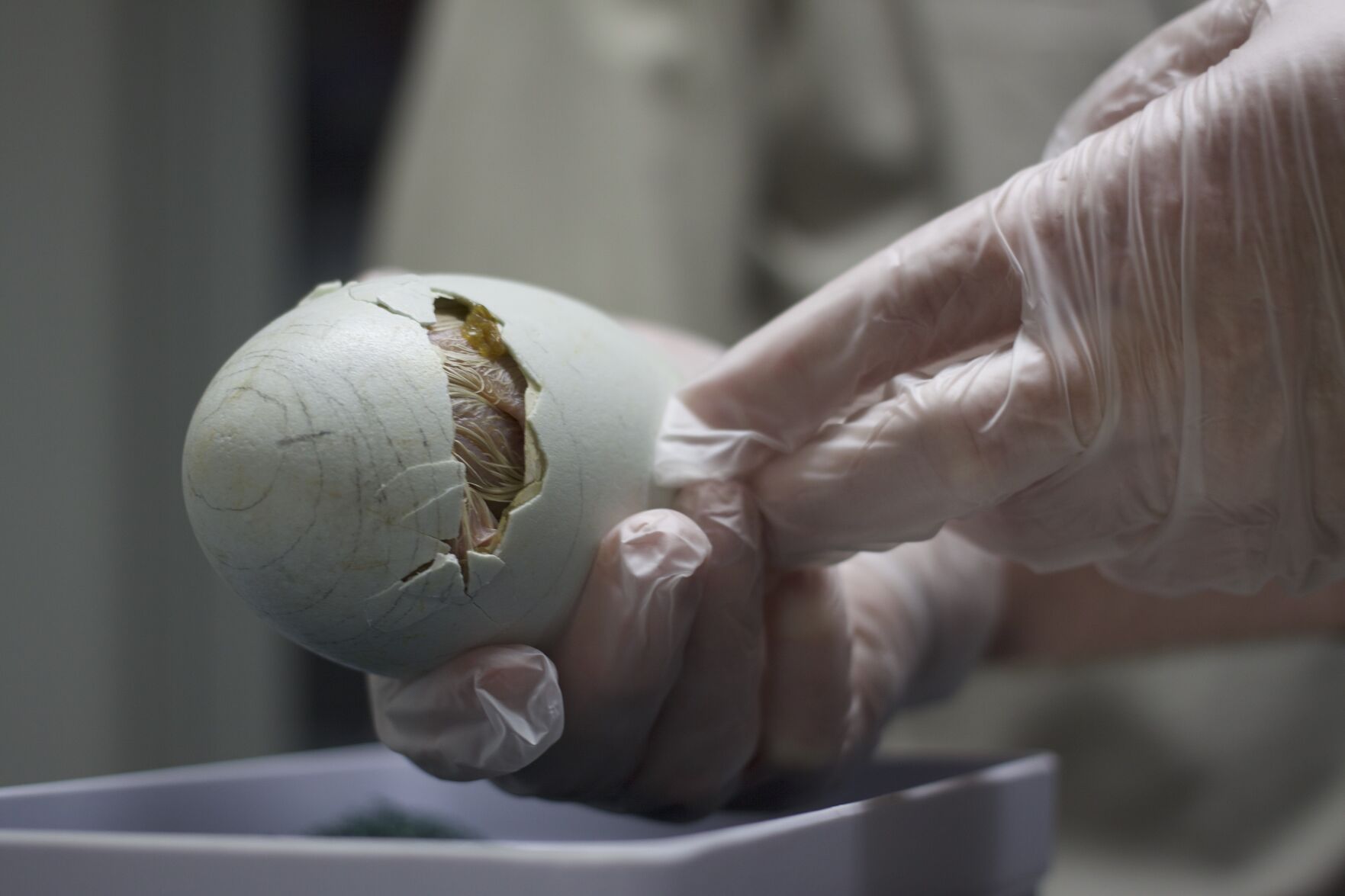
Condor egg.jpeg
Photo Credit: Mateo Hoke
“More than half of known condor deaths come from lead poisoning,” says Ron Webb, Lead Wildlife Care Specialist for Birds at the San Diego Zoo Safari Park.
Because the birds are scavengers, they ingest lead bullet fragments and shotgun pellets while eating animals that have been shot. California banned lead bullets in 2019. Chemical poisoning, poaching, and habitat destruction are also all major threats to California Condors.
“In 1982, there were only 22 California Condors in the world,” Webb says. In 1987, the last 27 remaining condors were captured to ensure survival. From there, breeding programs at four locations connected to the California Condor Recovery Program (part of US Fish and Wildlife Service) have slowly helped their numbers grow.
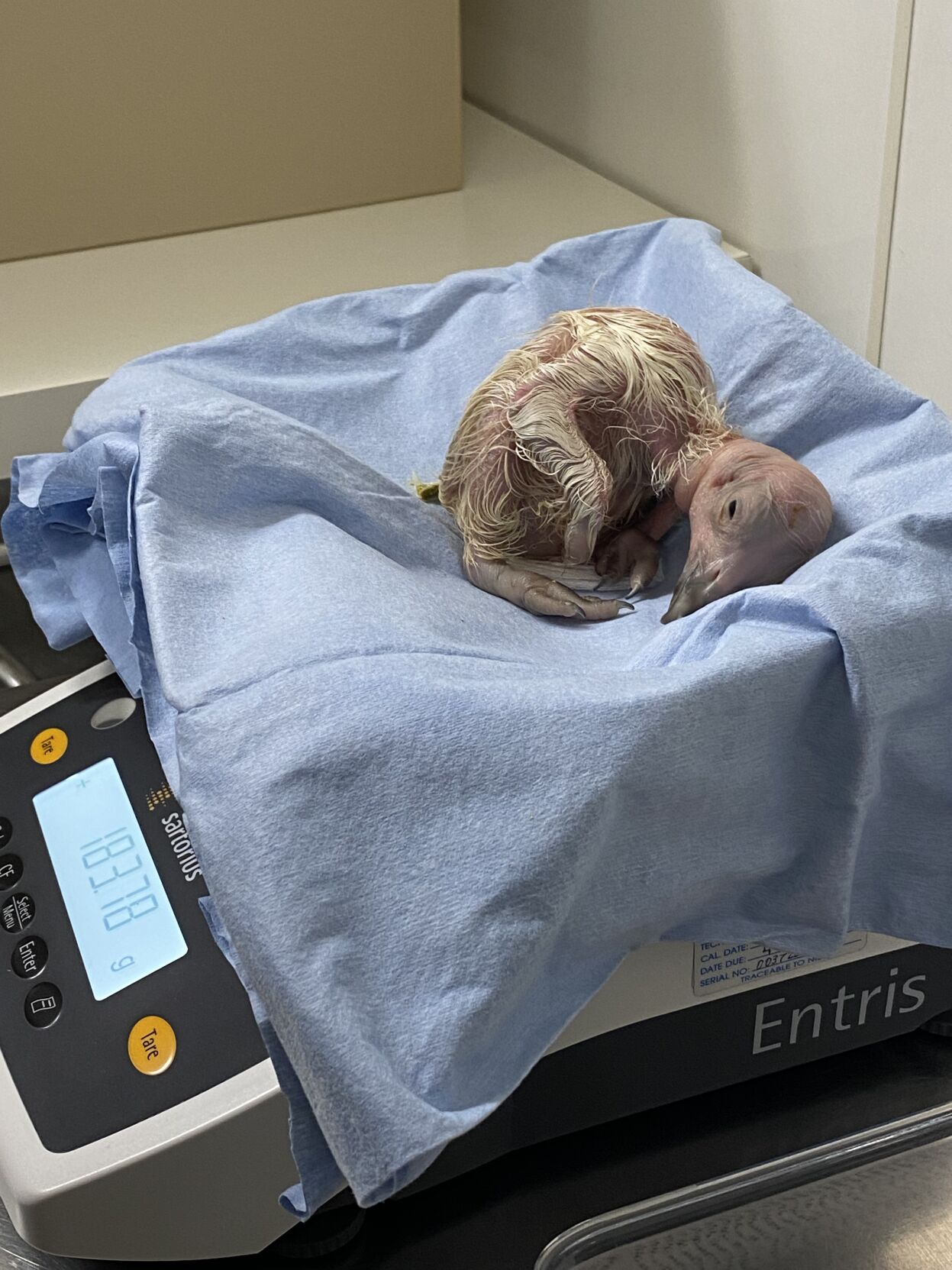
Condor scale.jpeg
Photo Credit: Mateo Hoke
In 1992, the first birds were released back into the wild. There are now more than 500 birds in the wild and captivity, with closely monitored wild populations in Arizona, Utah, California, and Baja.
In the wild, condor parents only lay one egg and raise one baby at a time. But in the recovery program, every egg is crucial to species survival. So, while many baby condors in the program grow up with their parents, if a female bird is able to lay more than one egg with the help of the wildlife specialists, then a baby condor may need to be puppet-raised, meaning wildlife specialists teach little ones like 2302 to eat with the aid of an adult condor puppet.
The puppet parent helps 2302 and other bitty birds learn important skills without getting too comfortable with humans, so they stay afraid and keep their distance once released into the wild.
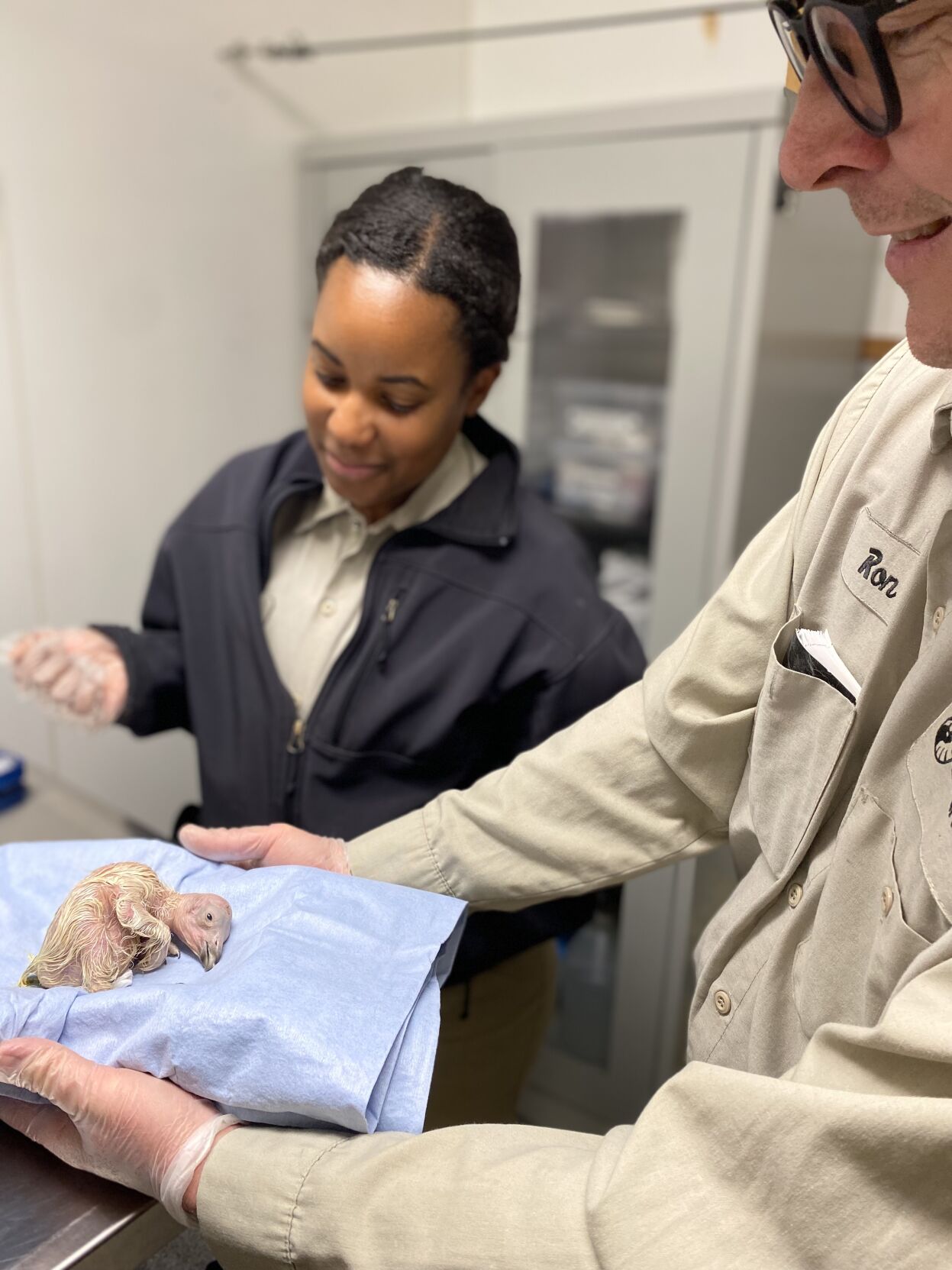
Ron Webb, Lead Wildlife Care Specialist for Birds at the San Diego Zoo Safari Park, and Wildlife Specialist Brittany Vega weigh and care for the newly hatched 2302. It was Vega’s first day on condor duty.
Photo Credit: Mateo Hoke
Webb—now in his 25th year on the job—was there to check on and weigh 2302 during hatching. He says his team is hoping to hatch 10 babies this year.
According to Webb, baby condors usually stay in the nest for five months, until they fledge and are ready to take flight. In the program, once birds like 2302 fledge—meaning they grow big enough to fly—they’re placed in a socialization pen for a year, then released when they’re about a year and a half old. So stay tuned.
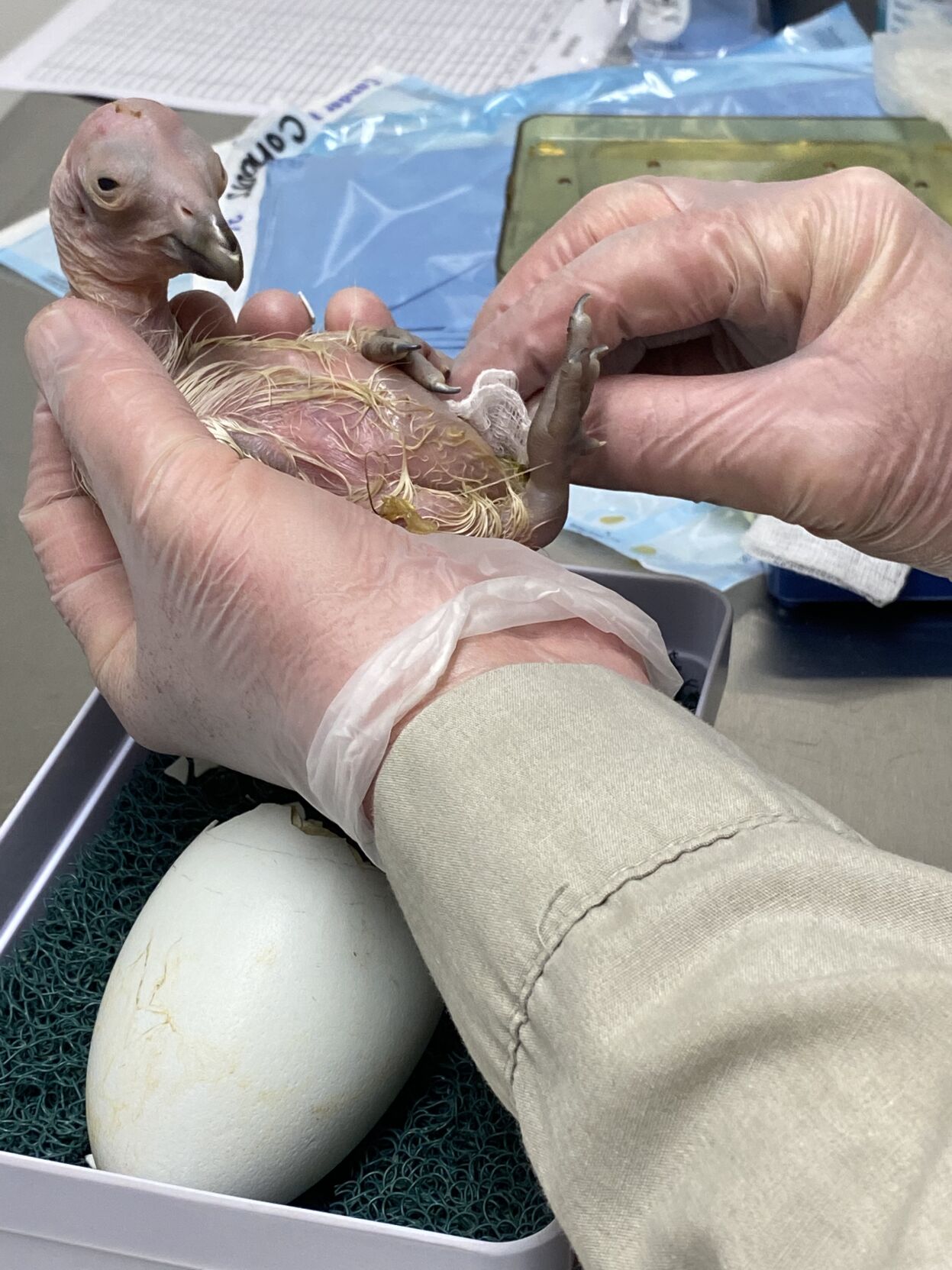
Condor 4.jpeg
Photo Credit: Mateo Hoke
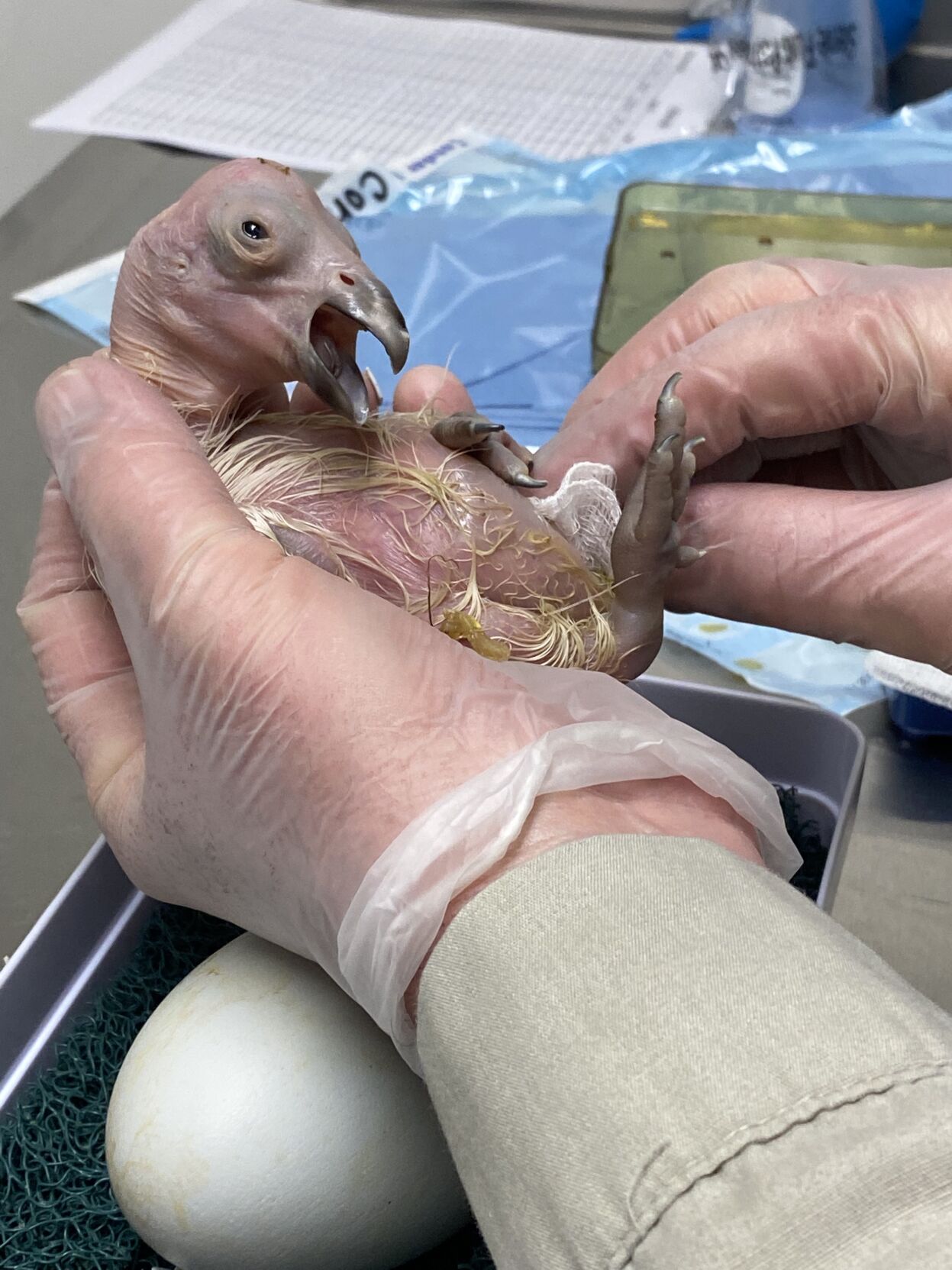
Condor 3.jpeg
Photo Credit: Mateo Hoke
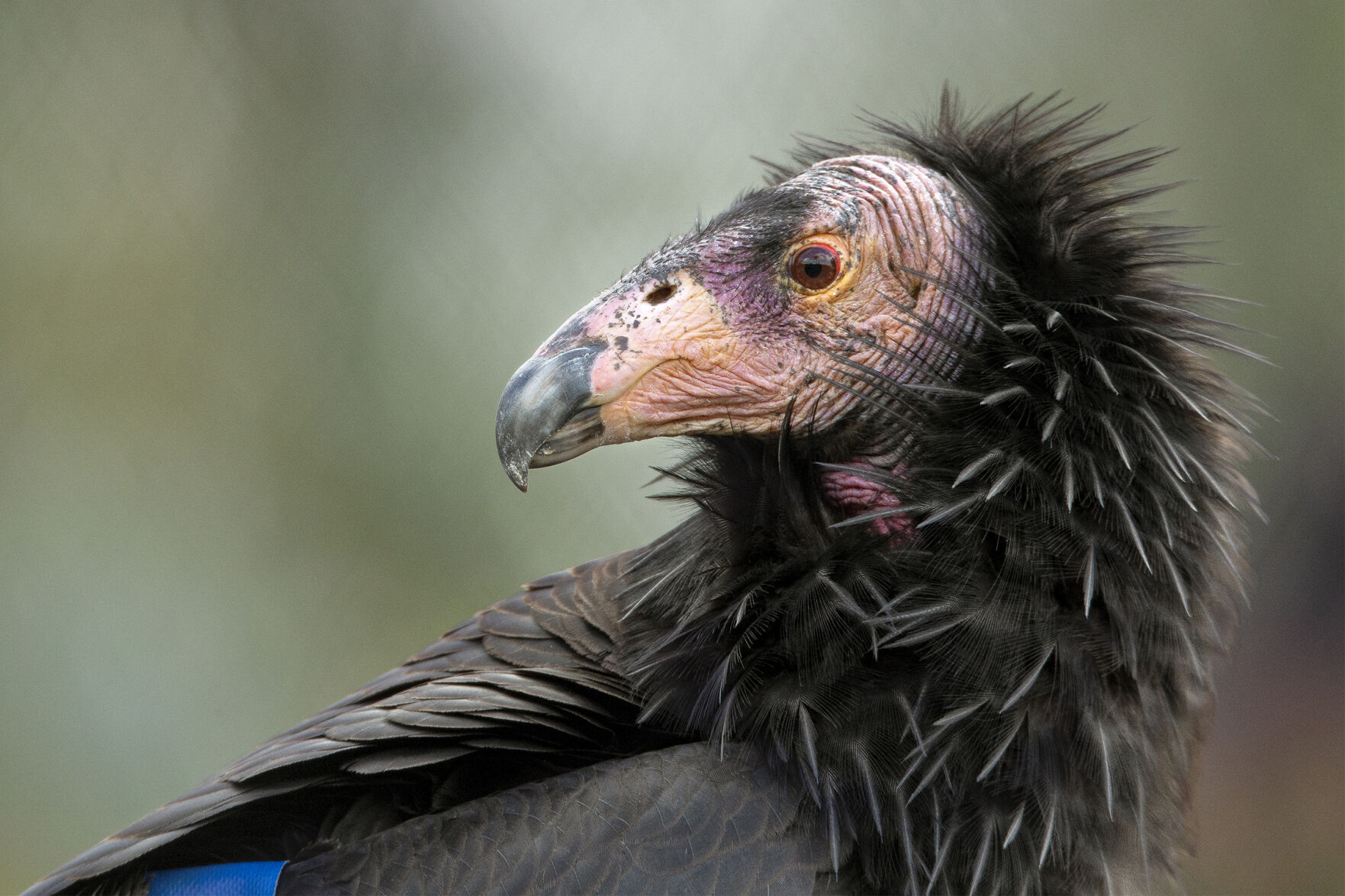
Sola, 2302’s beautiful mom. 2302’s mom, Sola, and dad, Siwon, were both born at the San Diego Zoo Safari Park as part of the California Condor Recovery Program.
Courtesy of the San Diego Zoo Safari Park
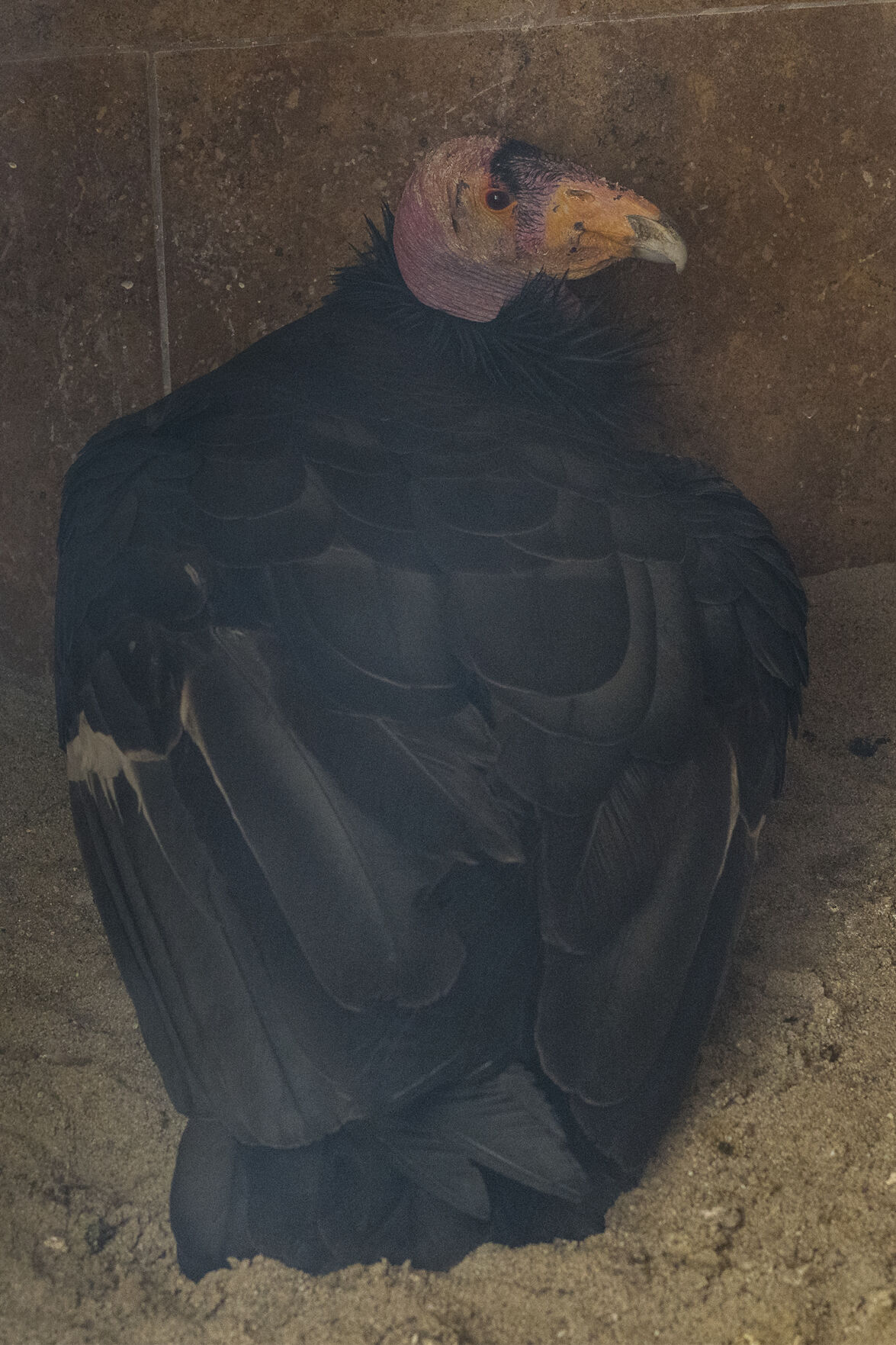
Siwon, 2302’s dad. 2302’s mom, Sola, and dad, Siwon, were both born at the San Diego Zoo Safari Park as part of the California Condor Recovery Program.
Courtesy of the San Diego Zoo Safari Park



















